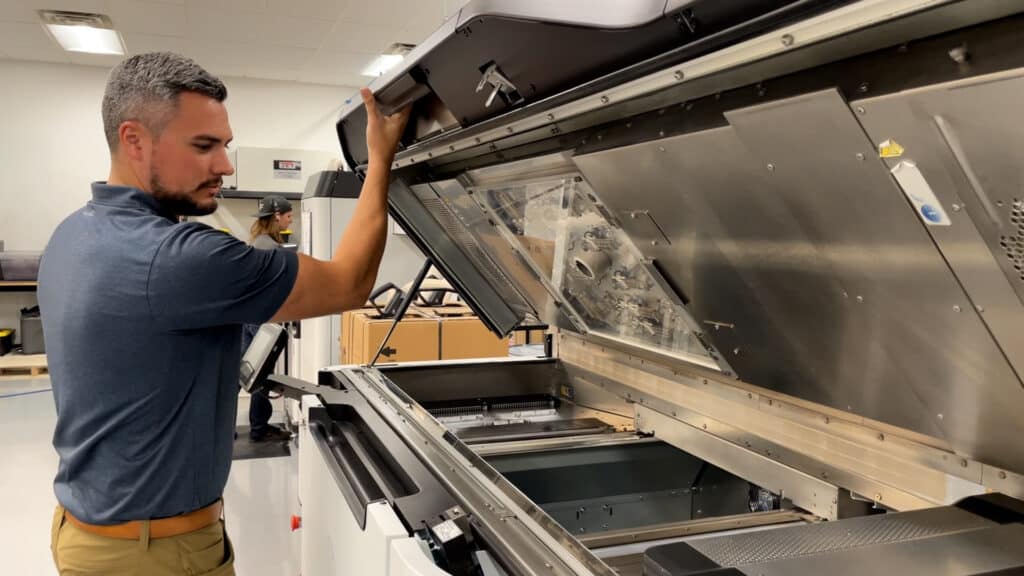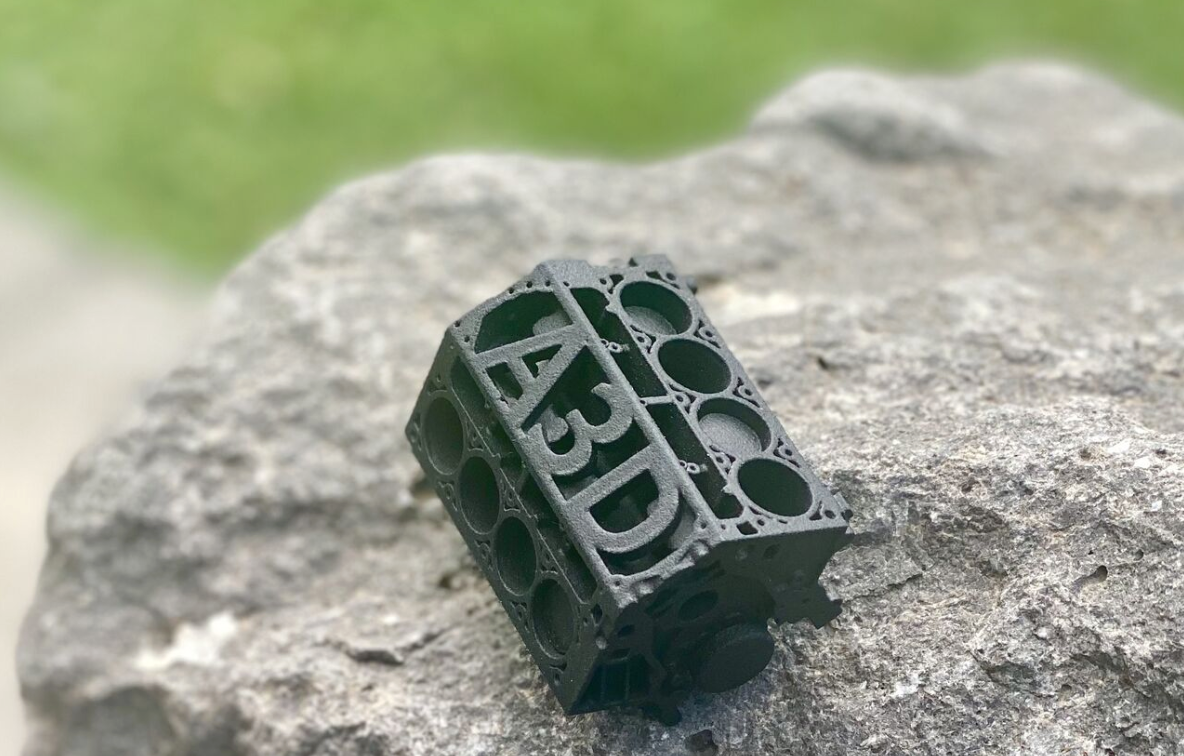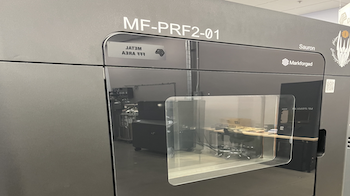Which Type of 3D Printing Material is Best?
What is the best 3D material to print with and why? The answer to that question all depends on what you’re trying to accomplish. You might need materials with high-temperature resistance, biocompatibility or superb mechanical strength — it will depend on your unique needs or project.
Ask yourself:
- Will the part or product be used inside or outside? In extreme conditions?
- Do you just need a simple prototype?
- How flexible or rigid does the part or product need to be?
- How important are aesthetics over functionality for this part or product
- How durable does the 3D printed part or product need to be?
- Does the part or product need to be UV-resistant? Heat or flame resistant? Conductive? Waterproof? Biocompatible?
There are tons of questions to answer. One thing is certain, the right material selection will have a direct impact on the functionality and durability of your product or parts over time.
If you work with the right 3D printing partner, you’ll have access to a range of materials, printers, and analysis that will help you choose the right 3D printing material.
So, what kind of 3D printing materials are out there and what are they best suited for? In this article, we’ll cover the main types of materials such as thermoplastics, metal alloys, composites, and resins used in contemporary 3D printing, and where they are best applied.
When to Use Engineering Thermoplastics as 3D Printing Material
Within the realm of engineering thermoplastics, various materials like ABS, ASA, PC, PC-ABS, Ultem, and PEKK offer exceptional properties that cater to specific industrial requirements.
ABS (Acrylonitrile Butadiene Styrene):
Acrylonitrile Butadiene Styrene is widely used and can be found everywhere — from the keycaps on your keyboard to Lego building bricks, it’s an engineering plastic with great mechanical properties. ABS is renowned for its robustness and heat resistance, making it a prime choice for functional parts in industries like automotive, appliances, electronics, pipes and fittings, and mechanical prototyping. Its strength and ability to handle moderate stress distinguish it as a preferred option.
Key takeaway: Use ABS as a 3D printing material when you need material that’s heat-resistant and strong.
ASA (Acrylonitrile Styrene Acrylate):
ASA combines the qualities of ABS and acrylic, offering superb UV resistance and resilience to outdoor conditions. This makes ASA a suitable choice for parts exposed to sunlight and variable weather, such as outdoor signage, automotive components, and radiation shields for environmental sensors.
Key takeaway: Use ASA as a 3D printing material when UV-resistance is imperative.
PC (Polycarbonate):
PC is esteemed for its exceptional impact resistance and transparency, making it a go-to material for applications requiring optical clarity and durability. For example, bullet-resistant polycarbonate is half the price of bullet-proof glass, and up to 250 times stronger, but it’s also softer and more likely to scratch. It’s also a heat and fire-resistant material. Medical devices, automotive lenses, and electronic components leverage PC’s unique combination of properties. CDs (Compact Discs) and safety helmets are two examples of products comprised of polycarbonate.
Key takeaway: Use PC as a 3D printing material when optical clarity and durability is needed.
PC-ABS (Polycarbonate-ABS Blend):
PC-ABS blends the strength and heat resistance of polycarbonate with the versatility of ABS. This material finds its application in automotive interiors, electronics, and consumer goods, where achieving a balance between aesthetics and performance is critical.
Key takeaway: Use PC-ABS as a 3D printing material when you want to prioritize heat resistance, strength, and aesthetics.
Ultem (Polyetherimide):
Ultem boasts remarkable thermal and chemical resistance, coupled with high strength. Industries like aerospace, automotive, military, and medical rely on Ultem for parts that demand stability at elevated temperatures and exposure to harsh chemicals.
Key takeaway: Use Ultem as a 3D printing material when chemical-resistance, strength, and weight are key factors.
PEKK (Polyether Ketone Ketone):
PEKK excels in high-temperature resistance, chemical resilience, and mechanical strength, rendering it suitable for aerospace, oil and gas, and medical sectors. Its ability to perform under extreme conditions positions it as a standout choice for demanding environments.
Key takeaway: Use PEKK as a 3D printing material for extreme conditions like high temperature or potential chemical exposure.
When to Use Nylon as 3D Printing Material
Nylon’s exceptional strength, flexibility, and durability make it a go-to material for creating parts subjected to high stress and repeated use, such as mechanical assemblies, electronic enclosures, and functional prototypes. Moreover, the utilization of post-process vapor smoothing renders it particularly well-suited for sectors like the medical industry.
Key takeaway: Use Nylon as a 3D printing material for high stress/repeated use parts or products.
When to Use TPU (Thermoplastic Polyurethane) as 3D Printing Material
TPU is a flexible and rubber-like material, ideal for producing parts requiring elasticity and impact resistance. Industries like footwear, robotics, and mechanical components benefit from TPU’s ability to create comfortable yet functional components.
Key takeaway: Use TPU as a 3D printing material when you need impact resistance and flexibility.
When to Use Metal Alloys as 3D Printing Material
3D printing isn’t limited to plastics; it also encompasses metals like Inconel, tool steel, stainless steel, and even copper. Industries like aerospace, automotive, and healthcare utilize metal 3D printing to create lightweight yet sturdy components, customized implants, and intricate, consolidated designs not achievable through traditional methods.
Key takeaway: Use metal alloys as 3D printing material for specific applications where conductivity or other unique properties of specific metals are best suited for your part or product.
When to Use Carbon Fiber Composites as 3D Printing Material
Combining the strength of carbon fiber with the versatility of 3D printing results in lightweight yet robust parts used in industries like sports equipment, automotive, and aerospace. These composites excel in applications where strength-to-weight, or stiffness-to-weight ratios are critical.
Key takeaway: Use carbon fiber composites as 3D printing material for the best strength-to-weight ratio among 3D printed materials.
When to Use Resin as a 3D Printing Material
Resin-based 3D printing, also known as stereolithography (SLA) or digital light processing (DLP), enables the creation of highly detailed and intricate parts with smooth surfaces. Different types of resins, such as standard, flexible, or high-temperature, offer solutions for jewelry, dental devices, and even engineering prototypes requiring fine detail.
Key takeaway: Use resin as a 3D printing material for highly detailed, intricate parts or products.
A3D Manufacturing Can Help You Choose the Right 3D Materials for your Parts and Products
The materials available in 3D printing today are currently reshaping the way industries design, manufacture, and interact with products. There exists a treasure trove of 3D printing materials out there —who knows what materials future 3D printers will utilize.
One thing you can count on is A3D will be at the forefront of it, keeping up to date on the latest and greatest trends and applications for additive manufacturing. We empower businesses to create and go to market with parts made with high precision, functionality, and unique requirements.
A3D’s team of expert engineers and quality assurance individuals work closely with businesses like FitMyFoot, Interlink Engineering, and Perceptive Sensor Technologies to bring parts and products to transform their ideas into optimized, functional parts.
Contact A3D Manufacturing today and let us bring your unique vision to life through our expertise in 3D printing.



